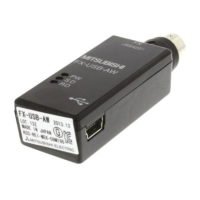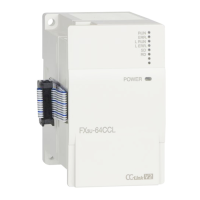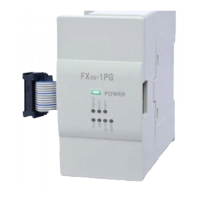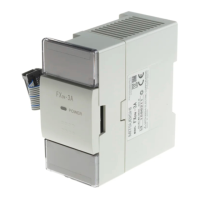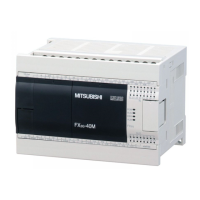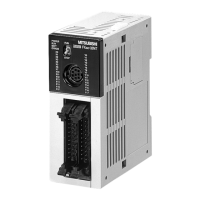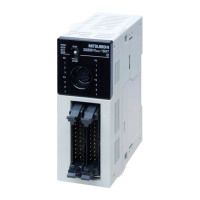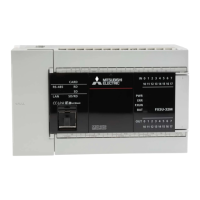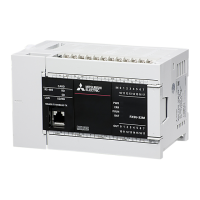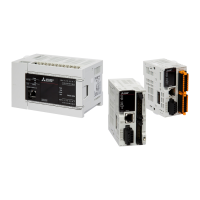5 Basic Instruction
5.13 END
99
FXCPU Structured Programming Manual
(Basic & Applied Instruction)
1
Outline
2
Instruction List
3
Configuration of
Instruction
4
How to Read
Explanation of
Instructions
5
Basic Instruction
6
Step Ladder
Instructions
7
Applied
Instructions
8
Interrupt Function
and Pulse Catch
Function
A
Relationships
between devices
and addresses
5.13 END
Outline
END instruction specifies the end of a program.
(Do not write the END instruction in the middle of a program.)
END instruction for ending a program and input/output processing and returning to 0 step is automatically
written at the end of the program. It cannot be programmed into program structural elements (POU).
Function and operation explanation
PLCs repeat "input processing → program execution → output processing". When END instruction is written
at the end of a program, PLCs immediately execute the output processing without executing steps after END
instruction.
If END instruction is not written at the end of a program, PLCs execute the program until the final step, and
then execute the output processing.
At the first execution after the PLC mode was changed from STOP to RUN, PLCs start from END instruction.
When END instruction is executed, the watchdog timer (which checks to see if the operation cycle is too long)
is refreshed.
Cautions
Do not write END instruction in the middle of a program.
5.14 NOP (for simple project only)
This instruction is available for use only in the simple project. It cannot be programmed in the structured
project.
FX3U(C) FX3G FX2N(C) FX1N(C) FX1S FXU/FX2C FX0N FX0(S)
FX3U(C) FX3G FX2N(C) FX1N(C) FX1S FXU/FX2C FX0N FX0(S)
Input processing
LD X000
OUT Y000
END
NOP
NOP
NOP
Output processing
Step
000
001
002
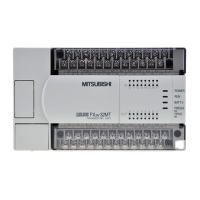
